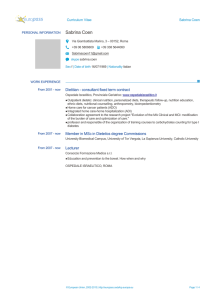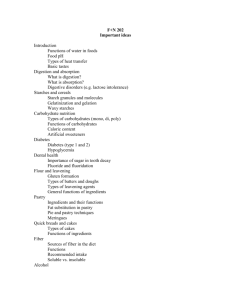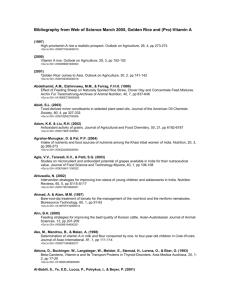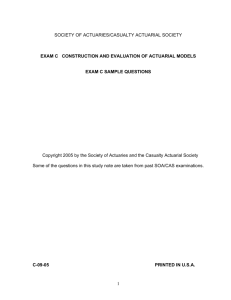Exercise 4: Understanding Nutrition Claims
advertisement
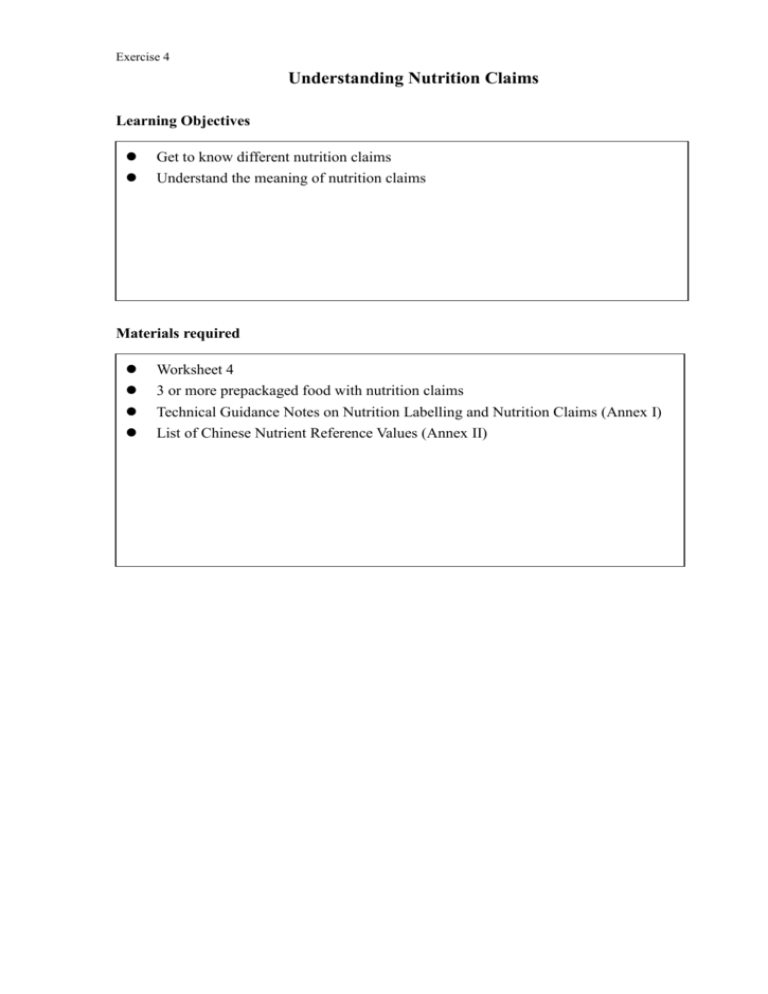
Exercise 4 Understanding Nutrition Claims Learning Objectives Get to know different nutrition claims Understand the meaning of nutrition claims Materials required Worksheet 4 3 or more prepackaged food with nutrition claims Technical Guidance Notes on Nutrition Labelling and Nutrition Claims (Annex I) List of Chinese Nutrient Reference Values (Annex II) Exercise 4 Worksheet 4 Understanding Nutrition Claims 1. Prepare 3 prepackaged food with nutrition claims. (Each prepackaged food should belong to different food groups). Fill in the nutrition claims, the specified condition(s) for the corresponding nutrition claims and the nutritional content of relevant nutrients on the nutrition labels in the table below. Food group/ Food products Grains & Cereals Meat, Poultry, Fish, Dry Beans & Eggs Vegetables and Fruits Dairy Products Fat, Oil, Salts & Sweets Drinks Nutrition Claim Condition(s) for the Nutrition Claim Nutritional Content of Relevant Nutrients on Nutrition Label Exercise 4 2. Which food group has the greatest number of products with nutrition claim? Which food product carries nutrition claim(s) most frequently? 3. What is the most common nutrition claim? 4. Do all the above nutrition claims meet their specified conditions? Remarks: You may combine the inputs from others and answer the questions above. Exercise 4 Annex I Exercise 4 Exercise 4 Exercise 4 Exercise 4 Annex II Chinese Nutrient Reference Values Energy (kcal) (kJ) 2000 8400 Protein (g) 60 Total fat (g) 60 Dietary fibre (g) 25 Saturated fatty acids (g) 20 Cholesterol (mg) 300 Carbohydrates (g) 300 Calcium (mg) 800 Phosphorus (mg) 700 Potassium (mg) 2000 Sodium (mg) 2000 Nutrient Reference Values (NRVs) are derived for nutrition labelling purpose. The NRVs are based on a 2000-kcal diet and are derived from recommended intake levels of various nutrients. Chinese NRVs are derived for Chinese so this set of values is suitable for people in Hong Kong and the Iron (mg) 15 Zinc (mg) 15 as a general reference for daily nutrient Copper (mg) 1.5 intake or limit. Iodine (μg) 150 Selenium (μg) 50 Magnesium (mg) 300 Manganese (mg) 3 countries, these products may use Chromium (μg) 50 different reference values, such as Molybdenum (μg) 40 Daily Value (DV) adopted in the US Fluoride (mg) 1 and Canada, or Daily Intake (DI) in Vitamin A (μg RE) 800 Vitamin C (mg) 100 Vitamin D (μg) 5 Vitamin E (mg _-TE) 14 Vitamin K (μg) 80 Vitamin B1 (mg) 1.4 Vitamin B2 (mg) 1.4 Vitamin B6 (mg) 1.4 Vitamin B12 (μg) 2.4 Niacin (mg) 14 Folic acid (μg DFE) 400 Pantothenic acid (mg) 5 Biotin (μg) 30 Choline (mg) 450 * Source of information: The Chinese Nutrition Society Mainland. Chinese NRVs can be used As food products available in Hong Kong may be imported from overseas Australia. 0
